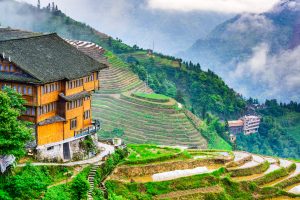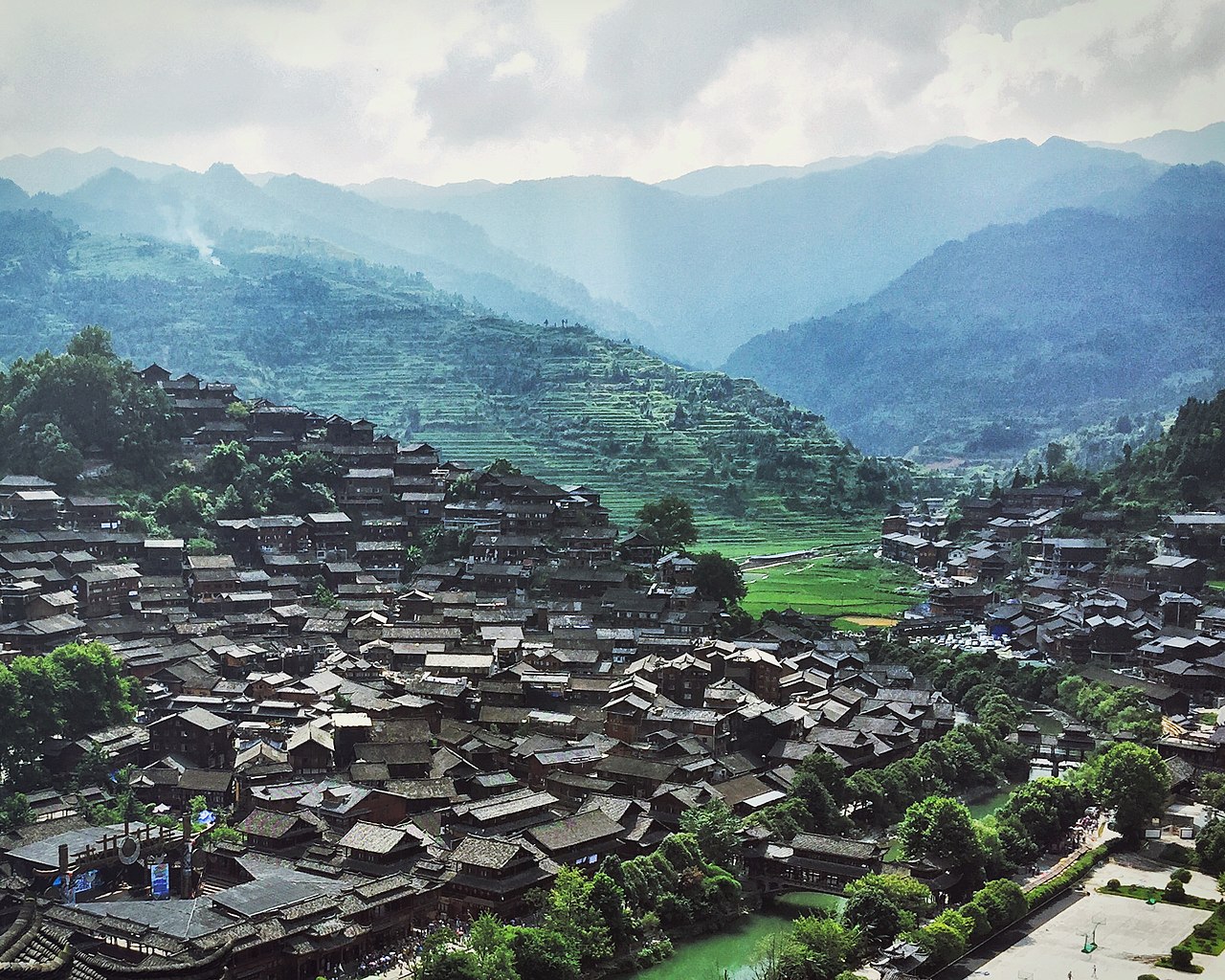In the tapestry of China’s economic landscape, its metropolises have long stood as shining beacons of progress, boasting cutting-edge technology and sprawling infrastructure that beckon the world’s attention. Yet, as these urban giants thrive, there exists a quieter narrative: that of the rural towns that yearn to reclaim a portion of the nation’s prosperity for themselves.
These towns’ bids for rejuvenation are marked by long-standing barriers. Historically, rural inhabitants longed for prosperous city life, prompting many to abandon their rural roots in search of improved opportunities. In the 1980s and 1990s, 260 million people in China left their hometowns to move to major urban centers. Indeed, the incentives metropolises offer — in terms of technology, job prospects, educational opportunities, amenities, and transportation — eclipse the modest lifestyle of rural villages.
But now, amid life in a competitive and pressurized city environment, China’s urbanites have begun to develop a yearning for life’s simple pleasures, drawing many back home.
On social media, travel advisory boards, and more, rural tourism has become the new craze. Year-on-year, the number of travelers to rural areas has jumped 55.5 percent, and in 2021, revenue climbed 48 percent to $551 billion.
Following the trend, companies, governments, and villagers alike have been quick to jump on the lucrative enterprise. Trip.com, China’s largest tourism agency, announced a plan in March 2021 to cultivate 10,000 professional agents with a focus on rural destinations and invest 1 billion yuan ($150 million) in industry funds. The company’s CEO, Jane Sun, expressed that “rural tourism is key to revitalizing rural areas … these targeted actions and strategies have led to more job opportunities and increased income among tourism professionals.”
In the national government’s 14th Five-Year Plan for 2021-2025, rural tourism was made a focus, with plans to further “open up the countryside,” investing in rural areas with notable geographic and ethnic features. In line with the administration’s previous efforts to cultivate “charming villages” across the countryside, the plan placed further emphasis on the need to develop more cultural and recreational activities.
Just this month, multiple new measures were outlined to support tourism. Locals, encouraged by official government suggestions, have modernized peasant houses to create 农家乐 (nongjiale), the Chinese term for homestays.
Indeed, with so much focus and resources poured into the endeavors, successful examples have emerged. In 2021, Yucun and Xidi, two Chinese towns that shifted their economy, were awarded U.N. World Tourism Organization designations as the world’s top tourist villages.
Yet, while some villages prosper, others struggle to attract attention. On a micro-scale, numerous local economies have hemorrhaged money to the point of collapse. One village received 60 million yuan ($9.3 million) in subsidies, but was unable to attract business. Examining the history of this cutthroat market, patterns of success and failure emerge.
The culmination of the above efforts is a generally unorganized attempt at the wholesale transformation of rural economies from agriculture to tourism. And that’s where the issue arises. In truth, the failure of many aspiring villages falls under two simple concepts: oversaturation and overinvestment.
As lucrative as the domestic tourism industry may be, market competition remains fierce, and not everyone’s cut out for tourism. For example, many villages fail to find a unique selling point. Anthropologist Liao Yue writes that “With so many villages all following identical development models, it is difficult for newly developed destinations to stand out from the crowd.” This fault leaves many contenders poorer than they started.
Prospective tourist villages, often blinded by hopes of prosperity, allocate substantial sums of money to refurbish and modernize, taking out loans where savings can’t cover the costs of renovation. Amid a debt risk crisis, this practice becomes all the more dangerous as municipal governments, who fund the endeavors, recklessly borrow themselves. The end result is a slew of unpayable high-interest loans because, ultimately, few villages have actually realized a return on their investments.
To the government’s credit, the problems that come with China’s rapid shift to tourism have been partially addressed. Experts have suggested that rural tourism and leisure agriculture should work in tandem. With an agricultural fallback, local economies are not overly dependent on one source of income.
Zhu Shengxuan of Xband Tourism, a company centered around rural tourism initiatives, explained that “rural areas should be planned as a whole.” More villages desperately need to heed this advice for more holistic approaches to their developments. While this advice holds true for newcomers to the industry, it has come too late for many villages. For those already committed, a few lessons are imperative.
One of the most striking ways a village can stand out in a heavily saturated market is by highlighting the unique cultural features that define the region. From customs to cuisine, there are many traditional practices that the most successful villages emphasize to attract travelers. The World Bank’s efforts to promote cultural tourism proved vastly successful, improving the lives of over 145,000 residents.
In Guizhou’s Xijiang Village, for example, the ethnic Miao tradition of throwing rice-wine parties became the village’s hallmark of success, turning the region’s historic poverty into prosperity. Li, a local sociologist, stressed that avoiding uniformity is key to a village’s development — because more than anything, young people hate homogenization.
Along with culture, sustainable economies built around ecology are the other piece to the puzzle. Yucun exemplifies this lesson; once a “stone economy” that destroyed its natural ecology for limestone processing, it became an eco-friendly tourist hotspot.
Designated as a UNESCO best tourism village in 2021, the village has come a long way from its polluted roots. Mou Boting, a local, told Chinese media that “over a decade ago, the gray sky was like a murky dome, suffocating the villagers’ hope for a better life.” In 2003, when the government shut down local mines, the village’s annual income plummeted from 3 million to 200,000 yuan. But the subsequent push for eco-tourism transformed quarries into parks and factories into libraries. Soon after, incomes started to rise. Last year, Yucun received 700,000 tourists and racked up 35 million yuan ($4.9 million) in revenue.
Not only has the quality of life increased, but the town is becoming a hotspot for green tech entrepreneurship. Once unheard terms, like “dual carbon strategy,” “zero carbon village,” and “carbon sink,” are finding their way into the local vernacular. As a result of these technological trends, even the rise of a tech-based high-income economy isn’t out of reach for the town’s future.
The highs and lows of China’s past ventures with rural tourism teach lessons for both the market’s aspiring entrants and incumbent competitors. With the number of tourism visits to rural villages expected to reach 4 billion by 2025, more hopefuls seeking success are inevitable. But success demands caution because where tales of triumph inspire, quieter narratives underscore possibilities of failure. Only through assessing precedent can the movement as a whole achieve greater success.
A previous version of this article stated that Yucun and Xidi were awarded tourism designations from UNESCO. It is UNWTO that issues the designations.


































